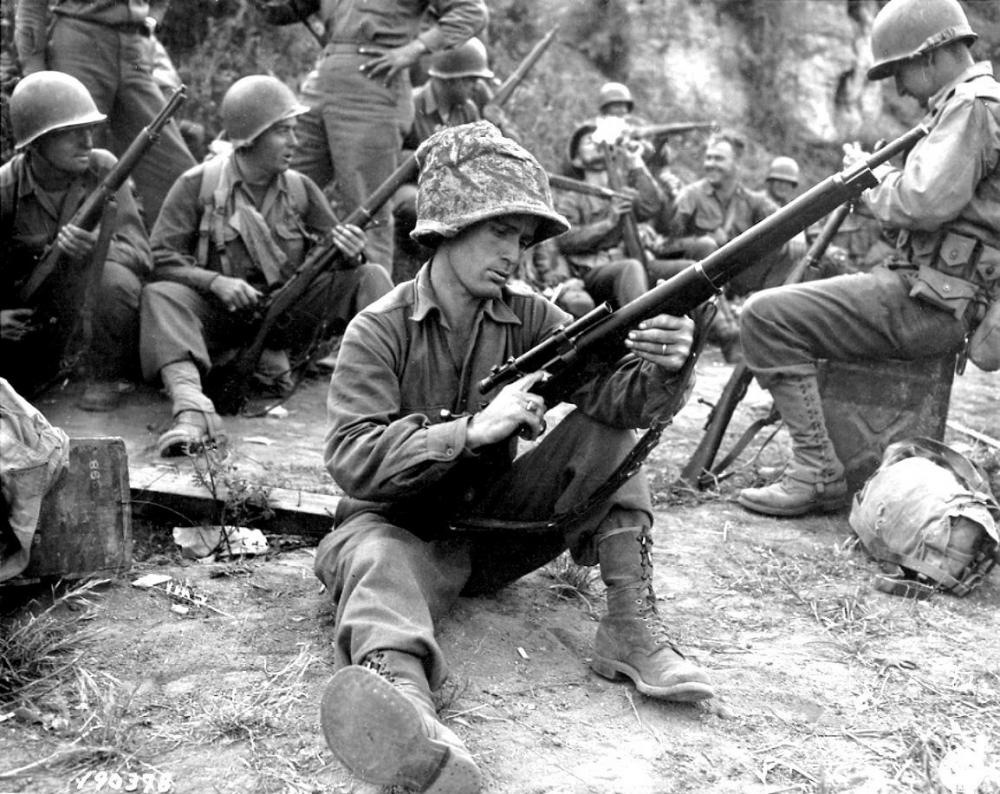In warfare the introduction of new weapons can often lead to significant changes on the battlefield and even give one side an overwhelming advantage for victory. Therefore, military technology is often rapidly advancing, looking for the latest and greatest weapon. That is what makes these five weapons so special – they stood the test of time, outlasted the competition, and proved themselves on the battlefield over and over again.
1. British Land Pattern Musket
First introduced in 1722 the British Land Pattern was a smoothbore, flint-lock, muzzle-loading musket. The Land Pattern and its derivatives would become the standard infantry weapon of the British Empire for over 100 years. Affectionately known as the Brown Bess by the soldiers who carried it, the weapons saw action all over the world. In several cases, such as the American Revolution and the Texas Revolution, the Brown Bess was used by both sides. The Brown Bess was finally retired from British service in 1838 in favor of a new percussion cap musket.
2. 3-line rifle M1891
Known colloquially as the Mosin-Nagant rifle, the M1891 saw service with the Russian Empire as well as the Soviet Union and is one of the most produced rifles in history with over 37 million units made. The M1891 first saw action in the Russo-Japanese war from 1904-1905. The M1891 was the main infantry rifle of Russian forces during the First World War and an improved version, the M1891/30, would serve as the main infantry rifle for the Soviets in WWII. After almost 60 years of service the Mosin-Nagant was finally retired shortly after World War II as the AK-47 and SKS became widely available.
3. Lee-Enfield
First introduced in 1895 the Lee-Enfield pattern rifles would serve as the primary rifle for British and Commonwealth forces for over 60 years before being retired in 1957. The rifle saw service worldwide, arming troops in the Boer Wars in South Africa, through both World Wars, and with some UN forces in Korea. A sniper variant rechambered in the 1950’s for the 7.62 NATO round and designated the L42A1 would see service until 1993, almost 100 years after the first rifle was fielded.
4. Springfield M1903
The Springfield Model 1903 was created in response to the poor performance of the US Army’s Krag-Jorgensen rifle during the Spanish-American War. Entering service as the main infantry rifle of the US military in 1903, the Springfield used a similar design to its predecessors – a bolt-action with a five-round internal magazine. The rifle would be the main weapon of US forces during World War I and would continue to serve alongside the newly introduced M1 Garand during World War II. As a sniper rifle, the M1903A4 would serve through the Korean War and into the early stages of the Vietnam War. The last user manual was printed by the US Army in 1970 almost 70 years after the rifle entered service.
5. Browning M2 Machine Gun
Affectionately known as “Ma-Deuce,” the Browning M2 .50 caliber machine gun has been in service around the world for almost 100 years. Design began at the tale end of World War I based on requirements put out by General John J. Pershing for a heavier machine gun. John Browning responded by scaling up his successful M1917 machine gun to accept a new .50 caliber round developed by Winchester Repeating Arms Company. The new weapon was first accepted in 1921. The unique design made the receiver transformable into seven different configurations. The M2 has served in all types of roles, from infantry to aircraft. The M2 is so reliable that in 2015 an M2 arrived at Anniston Army Depot for an overhaul after 94 years of continuous service. With 99 years of service under its belt and modifications being made the M2 will continue to be a staple of the infantry for years to come.

